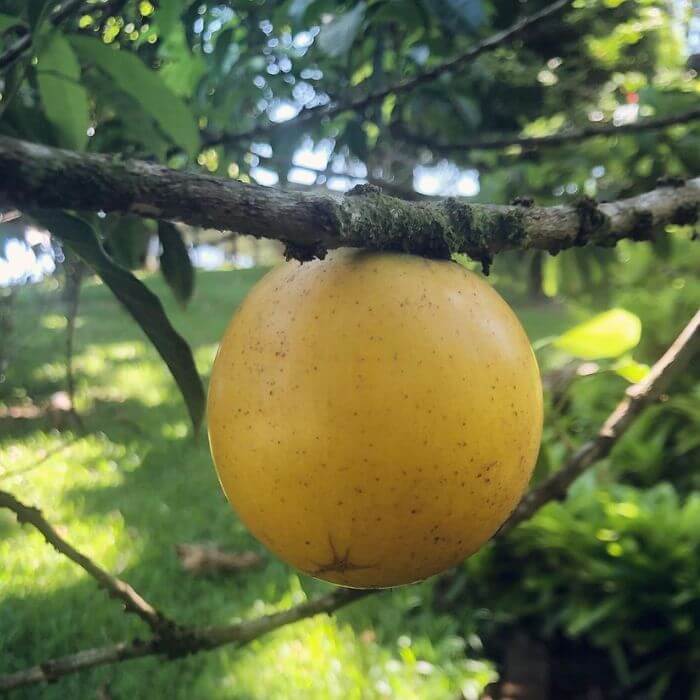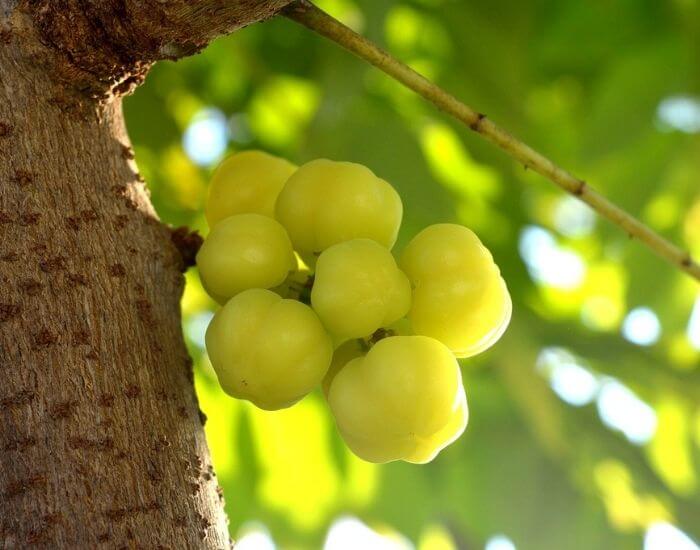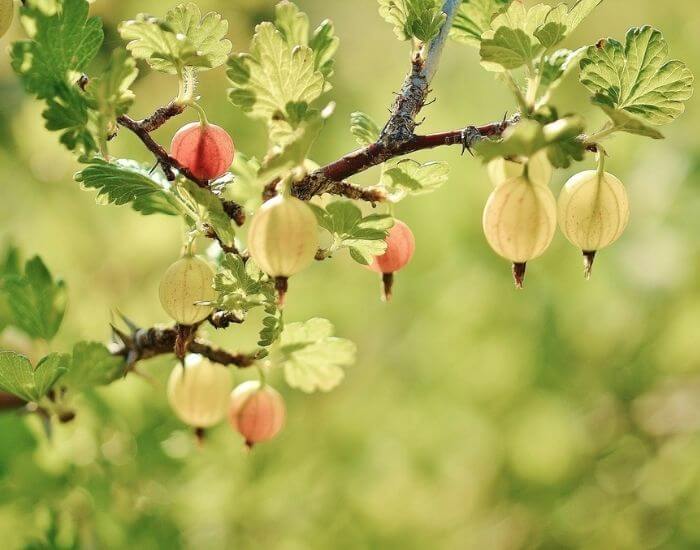Abiu fruit, scientifically called pouteria caimito, originates from South America and has gained popularity in North America. This small, round fruit is greenish-yellow in color when ripe and has a sweet, juicy pulp with a texture similar to that of an avocado.
In this article, we will explore the benefits of abiu fruit and how it can be incorporated into your diet.
What is abiu fruit?
The fruit has a distinct oval to round shape with a smooth greenish-yellow skin that turns yellow when fully ripe. Its flesh is translucent and jelly-like with a sweet flavor that is often compared to caramel or custard.
This fruit can be eaten raw or used in various desserts.
Color
Also known as the yellow star apple, this tropical fruit is native to the Amazon region.
Its color varies depending on its ripeness. When the fruit is unripe, it has a greenish-yellow color and feels firm to the touch.
As it ripens, the skin turns yellow and becomes slightly softer. A fully ripe abiu fruit will have a bright yellow color and be very soft to the touch.
While some people prefer to eat abiu fruits when they are still slightly firm, others wait until they are fully ripe for maximum sweetness. The color of the abiu fruit can be an indicator of its ripeness level and help you determine when it’s ready to eat.
Checking for ripeness
Pouteria caimito is not commonly found in grocery stores, so if you are lucky enough to come across it in a local farmer’s market, it’s important to know how to tell if it’s ripe. The key factor in determining the ripeness of abiu fruit is its color.
When unripe, this fruit has a greenish-yellow hue and is hard to the touch. As it matures, the skin turns yellow and becomes slightly softer.
Another way to tell if an abiu fruit is ripe is by giving it a gentle squeeze. If it yields slightly under pressure, then it’s ready for consumption.
Lastly, you can also use your sense of smell as an indicator of ripeness. Ripe abiu fruits have a sweet aroma.
Fruit preparation:
To prepare abiu fruit, start by washing it thoroughly.
To eat the fruit raw, simply slice it open with a knife and scoop out the pulpy flesh with a spoon. The flesh is sweet.
Related Read: Check gorgeous fruit holders
Where does abiu fruit come from?

source: woopydoofarm
Abiu fruit is native to South America, specifically the Amazon region. The fruit grows on tall trees that can reach up to 33 ft in height, with glossy green leaves and small green-white flowers.
The abiu tree typically thrives in humid and warm climates, making it a popular crop in countries such as Brazil, Colombia, and Peru.
In the US, abiu trees thrive in South Florida.
Nutritional facts
One serving of abiu fruit (100 grams) contains approximately 140 calories, 1.8 grams of protein, 36 grams of carbohydrates, 0.9 grams of fiber, and 0.4g fat. Abiu is an excellent source of vitamin C. It also contains significant amounts of vitamin A, calcium, and potassium.
When is pouteria caimito in season
In most places, the abiu season usually starts in May or June and lasts until August or September. In Florida, fruits mature during fall.
However, the exact timing of the season can vary depending on factors such as climate, temperature, and rainfall.
The best way to determine when abiu fruit is in season is to look for signs of maturity on the tree itself. Ripe abiu fruits will be soft to the touch and have a yellowish hue on their skin.
Additionally, they should be easily plucked from the tree without leaving any damage behind. When buying abius from a store or market, it’s important to choose fruits that are fully ripe for optimal flavor and sweetness.
Ways to eat yellow star apple
There are several ways to eat abiu fruit, including:
- Eating it fresh: The simplest way to enjoy abiu fruit is just to peel the skin off and eat the flesh straight from the fruit.
- Making jam or jelly: Abiu can be used to make jam or jelly, which can be spread on toast or used as a topping for yogurt or ice cream.
Ways to drink
Here are some creative ideas for drinking abiu fruit:
- Abiu smoothie: Blend pulp with your favorite fruits like bananas, strawberries, or mangoes for a refreshing smoothie. Add some milk or yogurt for extra creaminess.
- Abiu juice: Squeeze fresh pulp through a strainer to extract the juice. Mix it with water and honey or sugar according to your taste preference.
- Abiu ice cream: Add the pulp to frozen yogurt or ice cream.
What does abiu fruit taste like?
The fruit has soft, creamy flesh with a sweet taste similar to caramel flan or custard.
Some people describe its flavor as having hints of vanilla or pineapple with notes of honey. The texture is similar to that of an avocado but much sweeter and less fatty.
How to store Pouteria caimito
To store this yellow fruit properly, it should first be washed thoroughly with warm water. The next step is to dry using a paper towel before wrapping it in cling film or plastic wrap. This will help prevent mold growth.
After wrapping, it should then be placed in the refrigerator’s crisper drawer. The ideal temperature range for storing abiu fruit is between 50°F (10°C) and 55°F (12°C).
When storing abiu fruits for longer periods of time, they can also be frozen. To freeze them properly, wash and dry them as usual before placing them in an airtight container or freezer bag. Frozen Abui fruits can last up to six months when stored correctly.
Where to buy
Firstly, you can check your local farmer’s market or specialty grocery stores that carry tropical fruits. These types of stores may have abiu when they’re in season.
Another option is to purchase abiu online from specialty fruit sellers. There are many websites that offer various exotic fruits for sale, including abiu.
If you live in Florida, it might be possible to grow your own abiu tree in your backyard. However, keep in mind that the trees can take up to five years before producing any fruits.
Growing an abiu tree requires some specific conditions such as high humidity and temperatures
Overall, whether you decide to buy fresh abui at a store or try growing your own tree; tasting this delicious tropical fruit will be well worth the effort!
Does abiu grow true to seed?
Some experts claim that the fruit does not grow true to seed, meaning the resulting tree may not produce fruits with the same taste and quality as the parent plant. Others argue that abiu can grow true to seed if proper selection and cultivation techniques are used.
To ensure high-quality fruits from an abiu tree, many growers recommend grafting or cloning instead of planting seeds. This allows for more precise control over the genetic makeup of the tree and ensures consistent fruit production.
However, for those interested in growing abiu from seed, it’s important to keep in mind that there may be some variability in flavor and quality among different trees.
sources:
Hi There,
My name is Jenny. I’m the Chief Editor at Try Green Recipes and besides making yummy and healthy foods for my kids, grandkids, and friends. I’m new to the blogging world but I believe what I have to share is unique and will bring joy to your home. If you are adventurous and want try something tasty, let’s get started.

